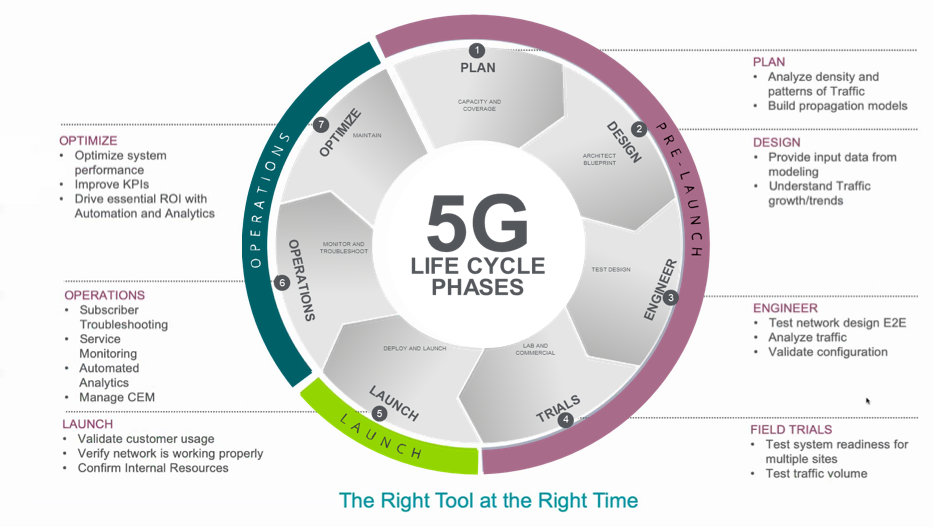Carriers around the world are embracing 5G as the next generational leap for network technologies, with trials and deployments taking place in just about every major market worldwide. The changing network topology of 5G, with the potential of millions of small cells being added to networks over the next several years, also demands a new approach for service assurance to successfully build and scale 5G networks—one that provides total visibility and actionable insights at all phases of the 5G life cycle, from pre-launch to launch to commercial operations.
5G Life Cycle

But what does 5G life cycle visibility mean in practice? It helps to look at the role service assurance plays in each of the different phases of the 5G life cycle to get a clearer picture of how end-to-end visibility can help carriers overcome the challenges they face in a 5G world:
- Plan: How many cells are enough and where do they need to go? Understanding the propagation properties of millimeter wave in real-world environments is key for 5G. Predictive analysis helps gain visibility into augmentation measurements, develop accurate propagation models, and analyze density and traffic patterns. Bottom-line benefit: Avoid over-planning and under planning and save on CAPEX.
- Trials: Is your 5G network really ready for commercial use? The ability to pre-launch the network in a trial phase and test from multiple sites using near real-time insights is critical to assuring commercial readiness. Bottom-line benefit: Avoiding customer experience nightmares by spotting issues before production.
- Launch: How many customers are using the network at any given time/place? The right analytics can provide key insights into metrics such as unique subscriber counts, allowing carriers to validate customer usage and confirm internal resources. Bottom-line benefit: Knowing 5G update and customer usage at every and any point of the network.
- Operations: How well is the network performing? Where are the trouble spots? End-to-end troubleshooting can be leveraged to ensure low latency at the edge and reduce mean time to repair (MTTR). Bottom-line benefit: Improved OPEX and better ROI evaluation.
- Optimize: What are the traffic hotspots? Where should new cell sites be deployed as traffic increases? End-to-end visibility is crucial to optimizing system performance and improving key-performance indicators (KPIs). This is a continual process that means 24x7 visibility. Bottom-line benefit: Reduced OPEX through optimization.
NETSCOUT delivers Visibility Without Borders from the RAN to the core to the edge. With this unprecedented level of visibility through all phases of the 5G life cycle, carriers can proactively plan for disruptions, monetize new services, maintain SLAs and reduce TCO across multi-generations of network technologies as they forge into the new world of 5G.
Learn more about our carrier-grade 5G solution for the complete 5G life cycle.
Broughton is the senior director of service provider marketing at NETSCOUT.
